How To Identify A Crabapple Tree – Its Looks & Identification Guide
Crabapple trees are short as compared to regular apple trees. They have egg or oval shaped smooth leaves and greenish to yellow or red colored small sized fruits.
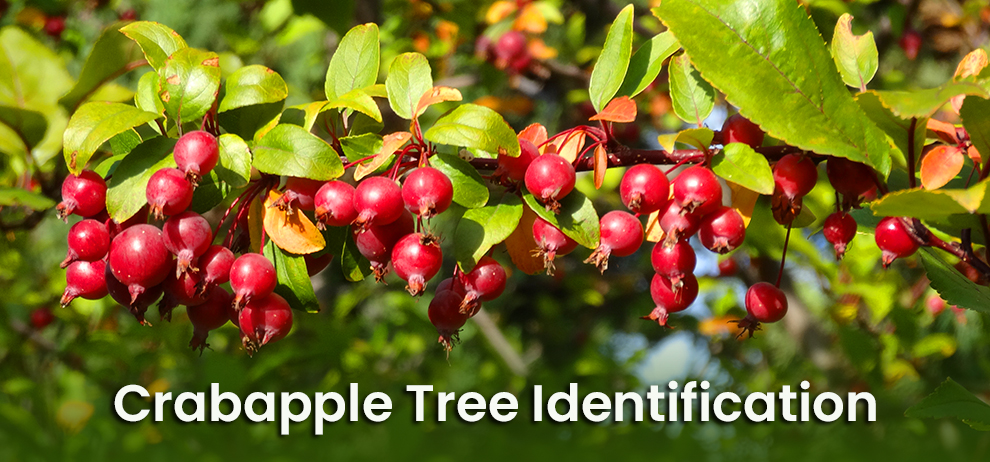
Native to Europe, including Turkey, Western Russia, and Britain, the Crabapple stands for the forest apple. It is found in the hedgerows and woods. Since it is Europe’s wild apple, many confuse it with the Orchard Apple trees grown from discarded apple pips. To not mix the two, you must know the correct identification.
So, how do you make a Crabapple tree identification?
Typically, you can identify the Crabapple through its small-sized fruits, white flowers in the spring, and smooth leaves.
Unlike the Orchard Apple, which has hairy leaves underneath, the Crabapple leaves are hairless. Crabapple’s white blossoms show in spring.
In all honesty, identifying the Crabapple fruit is not challenging. They are hard, yellow when ready to eat, small, and sour in taste. The tree has thorns on the lower branches.
What Does Crabapple Tree Look Like?
| Crabapple tree’s scientific name | Malus spp. and cultivars |
| Leaf | Small teeth with the hairless underside |
| Fruit | Small and green, but ripen to yellow. |
| Flowers | White tinged with pink – have five petals and show during April and May. |
| Trunk |
|
| Care guide |
|
| Tree size | Small to mid-sized – 8 to 20 feet with 6 to 20 feet spread. |
| Tree shape |
Various shapes, depending on how they are pruned and the variety planted. Some common shapes include:
|
How To Identify Crab Apple Trees?
The crab apple trees grow near hedges, along the river banks, and the woodlands. They desire nutrient-rich soil with high levels of lime and alkalinity.
Crabapples are prevalent in areas with high moisture and direct sunlight. These look like other apple trees, but they are small, ranging between six to fifty feet. Typically, the average height is around twenty-five feet.
Sometimes, Crabapple yields multiple shoots and trunks and looks like large bushes. They have a scaly, rough, and gray bark. As the plant ages, the bark develops cracks. Read below as we discuss in detail how to identify a Crabapple tree.
A. Crabapple Tree Flowers
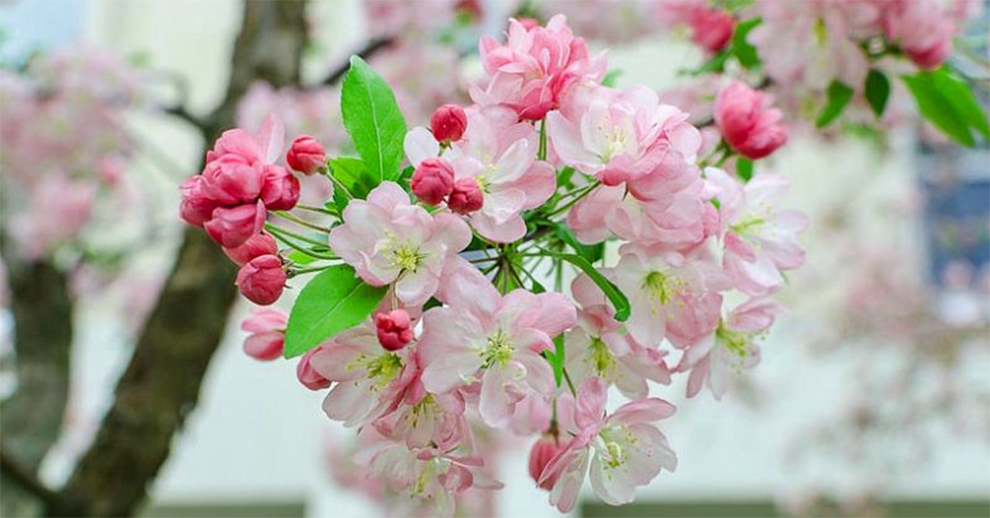
Crabapples are famous for their many beautiful flowers that bloom in the spring. Usually, the flowers are in red, white, or pink colors, ranging from double to single blooms.
Their fragrance and beauty make them a popular choice for landscaping and gardens. The flowers also work as a vital nectar source for butterflies, bees, and other pollinators.
Some prevalent attributes of the flowers that can help with Crabapple tree identification are:
- The Crab apple flowers are available in various colors, comprising shades of white, pink, and red. You can check out the crabapple varieties with flowers here. You might find two or more colors in a single flower in some varieties.
- Their flowers are cup-shaped, with five petals enveloping the cluster of stamens.
- Some varieties have fragrant flowers, emitting a fruity and sweet scent.
- Their size depends on the variety grown. While some flowers might be as small as half an inch in diameter, others may be several inches wide.
B. Crabapple Tree Fruits
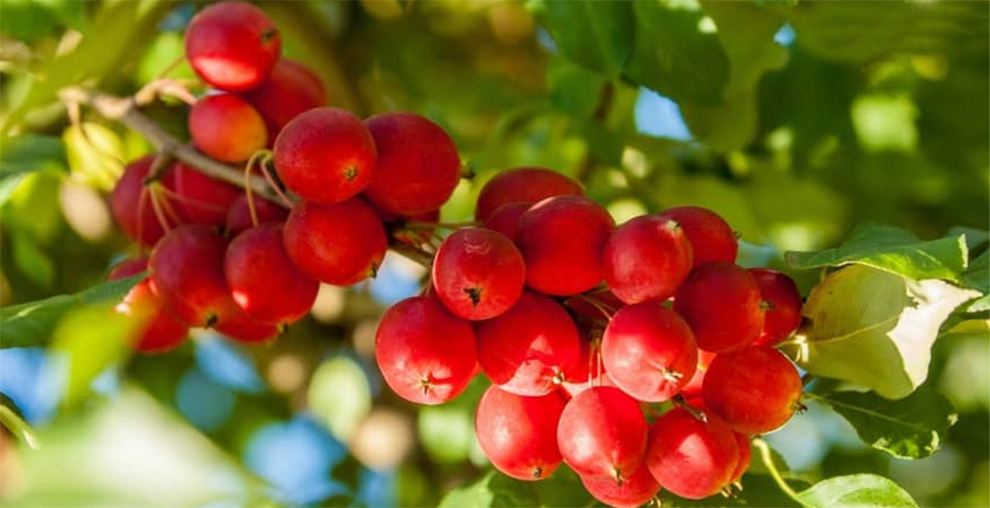
In Crabapple trees, the fruits are small, typically 1-2 inches in diameter. Its fruits are green, yellow, or red and have a sour or tart flavor.
Crabapple fruits are a vital source of food for wildlife and birds. They are employed in various culinary and ornamental applications. Some Crabapple varieties are exquisitely bred for fruit production, while others are grown for decorative value and beautiful flowers.
Some prevalent attributes of the fruits that can help with Crabapple tree identification are:
- The fruits are small and usually range between 1 to 2 inches in diameter. Some varieties may have relatively smaller or larger fruits. They somewhat look like large-sized cherries.
- The color of the fruit might vary depending on your chosen variety. However, the fruit is typically in shades of red, yellow, and green.
- Their skin is smooth and firm, and the inside flesh is juicy and crisp.
- Fruits have a sour or tart flavor and are usually not eaten raw. But they can find use in culinary applications like cider, jam, or jelly.
C. Crabapple Tree Leaves
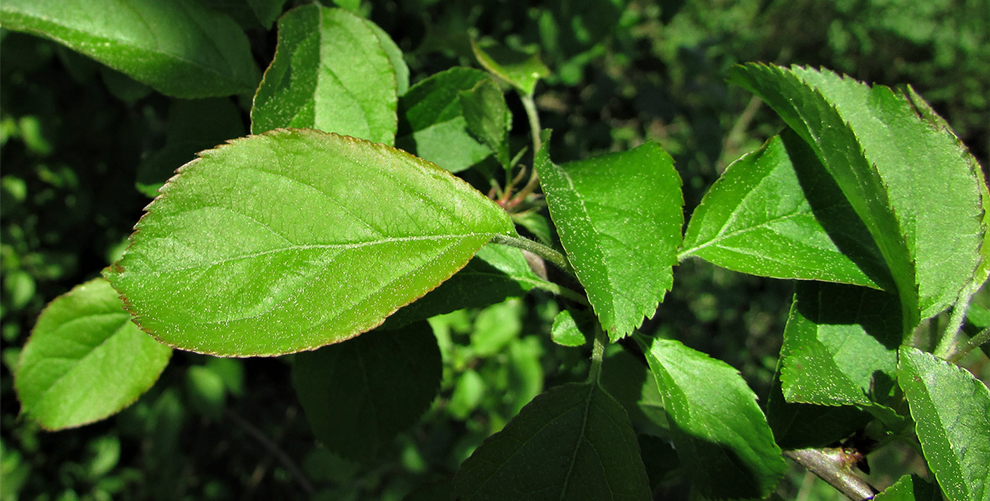
Typically, the Crabapple trees have simple leaves with a single blade. The leaves are deciduous. So, they change their color to red, orange, or yellow before finally dropping from the trees in the fall.
These leaves work as a vital food source for insects and caterpillars. They also help in the photosynthesis process.
So, let’s understand what does a crabapple tree look like in terms of its leaves.
- Crabapple leaves are egg or oval-shaped with serrated edges and a pointed tip.
- Usually, the leaves might vary in size, depending on your chosen variety. Ideally, the leaves range between two and four inches with one to three inches spread.
- There might be a variation in color ranging from light to dark green. However, some Crabapple varieties might have reddish-purple or bronze leaves.
- Crabapple has smooth and shiny leaves on the top, but they may be somewhat fuzzy or hairy on the underside.
- Its leaves are arranged alternately along the branches. It means they do not grow directly across from one another.
D. Crabapple Tree Bark
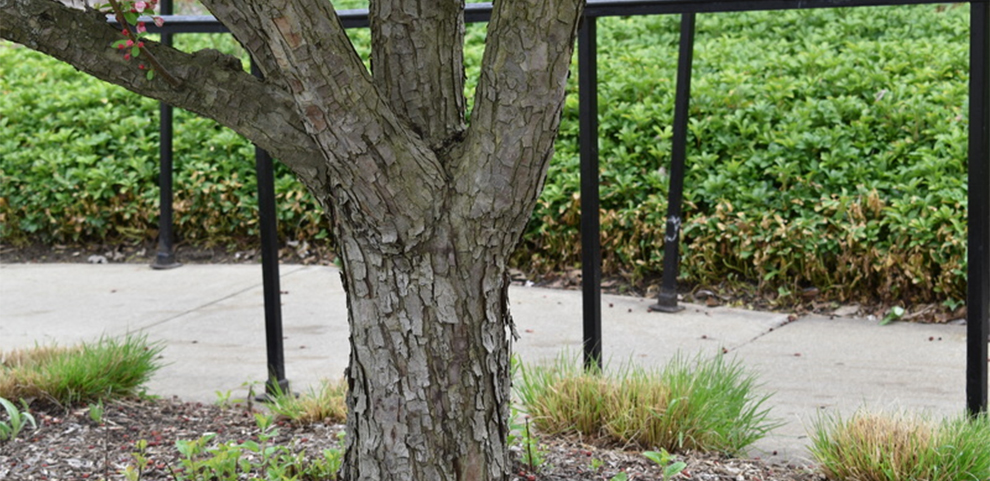
The Crabapple tree’s bark might vary in appearance depending on the variety and the tree’s age. Sadly, the bark is not as showy as the plant’s fruit and flowers, but it is a vital attribute that can help identify.
In addition, the bark adds a protective layer to the tree, guarding it against damage and helping keep moisture and temperature levels in check.
Some prevalent attributes of the bark that can help you spot a Crabapple tree are:
- The bark’s thickness depends on the tree’s age and health.
- Its pattern might vary from a mosaic of small scales to long vertical strips that peel from the trunk.
- The Crabapple’s texture ranges from smooth and shiny to deeply furrowed and rough.
- The young Crabapple trees have a smooth, gray-hued bark. However, the mature counterparts will have fissured, rough, and dark bark.
E. Tree’s Overall Size and Shape – How Big are Crab Apple Trees?
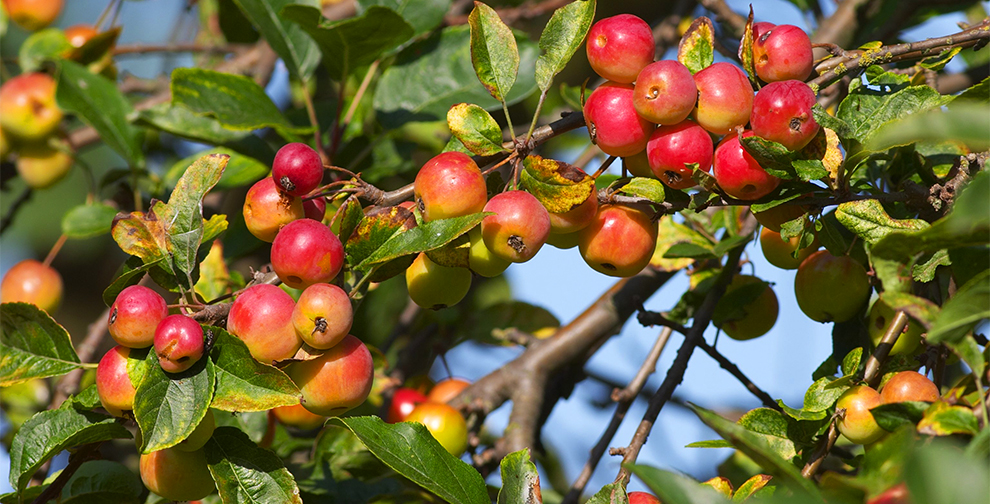
A mature crab apple can vary in size depending on the growing conditions, variety, and pruning practices. However, crabapple trees fall in the small to medium range. So, most trees will be between eight and thirty feet tall with a six to twenty-five feet spread.
People who yearn for smaller apple trees in their garden will appreciate the dwarf varieties, which go up to eight feet.
While some Crabapple trees are upright in the growth habit, others have a weeping or a spreading form. Crabapple trees are famous for their ornamental value, small fruit, and beautiful flowers.
Related: How long do crabapple trees live?
Key Takeaway – How Do You Tell If It’s A Crabapple?
Finally, we will sum up the different characteristics that can help you identify whether it is a Crabapple or not:
1. Size: These trees are tinier than the typical apple trees, and the size ranges from 8 to 30 feet with a spread of six to twenty-five feet.
2. Leaves: Their leaves are egg or oval-shaped with serrated edges and pointed tips. The leaves are usually 1-3 inches wide and two to four inches long.
3. Flowers: Its flowers are fragrant and showy and bring a bloom during the spring. Flowers are usually red, white, or pink. However, some plants may also have purple-tinged flowers.
4. Fruits: The trees have small, tart fruits, about one to two inches in diameter. These fruits are red, green, or yellow.
5. Bark: The bark varies depending on the variety and the age. The bark is gray and smooth in younger trees, whereas the older trees have fissured, rough, and dark bark.
That’s all on the Crabapple tree identification. If you still find it challenging to identify the Crabapple, you must hunt for the identifying labels or tags attached to the tree. Alternatively, you can contact a horticulturist or any knowledgeable nursery near you.
